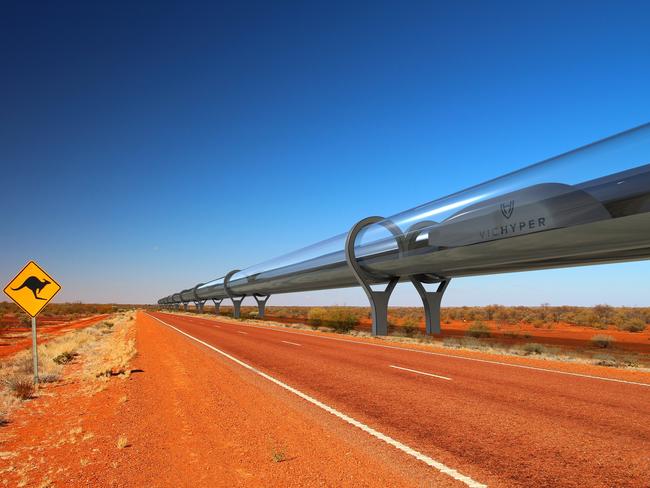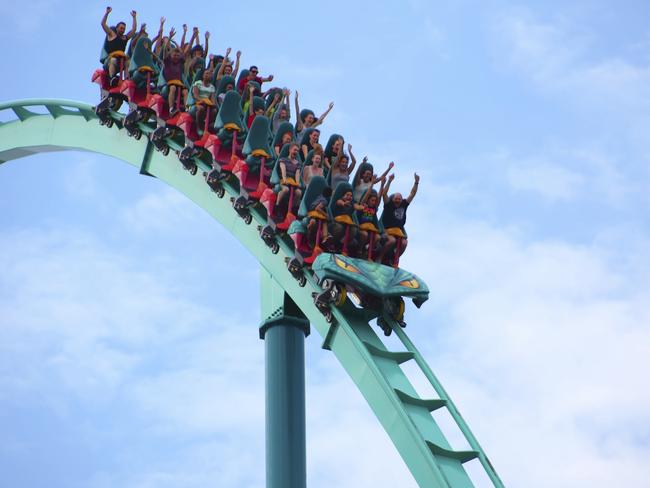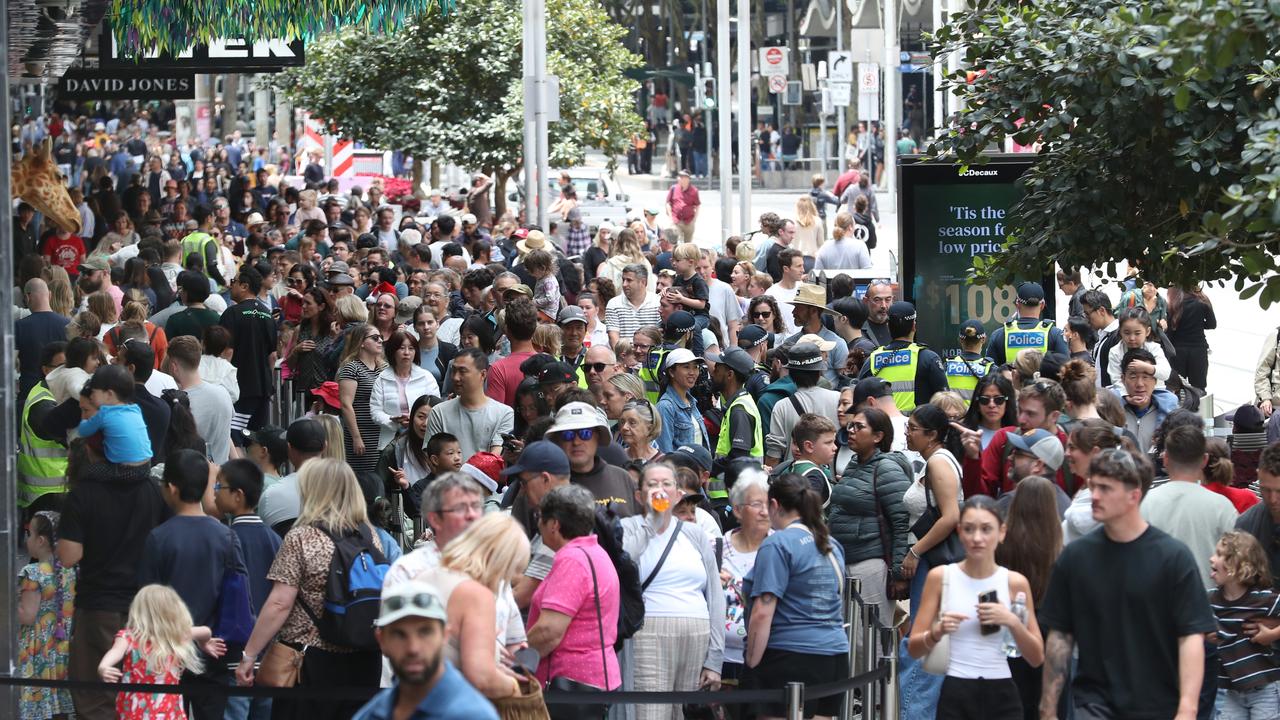What riding on Hyperloop technology would really feel like
THE Hyperloop promises to get you from Sydney to Melbourne in 55 minutes, but the proposal didn’t mention the downside.
THE possibility of getting from Sydney to Melbourne by train in under an hour generates so much excitement it’s basically become part of the Australian dream.
But when the ride is literally stomach-churning, is it worth it?
While plans for the latest super fast, fuss-free alternative to flying to be floated to connect our two major cities made a splash earlier this week, a researcher who has analysed the proposal has rubbished the revolutionary idea.
The futuristic Hyperloop is envisioned as a supersonic tubular capsule, capable of speeds of more than 1000km per hour along a magnetic track.
Tech company Hyperloop One has invested in the development of the Hyperloop system to the tune of $80 million, and has flagged the Australian east coast route as a testing ground.
But while the high speed transportation may sound like a convenient dream, mathematics researcher Alon Levy says it would be worse on the stomach than an hour on a loopy rollercoaster.
He describes the allegedly motion-sickness inducing transportation system as “a barf ride”.
Mr Levy has been protesting against the much hyped Hyperloop since it was first proposed by Silicon Valley billionaire and Tesla founder Elon Musk back in 2013.
Since the initial proposal, though Musk has apparently lost interest in the project, it’s gained interest across the world with cities in Europe, America and the Middle East taking note of the project. Hyperloop One’s Australia proposal is the most recent, and one of the more advanced iterations.

But again, Mr Levy has weighed in, slamming the idea as a “thought bubble”.
In an interview broadcast on ABC radio on Wednesday, the researcher and blogger outlined just how uncomfortable a ride on the Hyperloop, if built as proposed, would be.
“On Hyperloop, the proposed curve radii are several times too low, and the result is that passengers are going to feel the g-force that’s more than that of a plane taking off,” he said.
Basically, every time the tube goes around a bend, good luck to your stomach.
Mr Levy expanded on this in his 2013 blogged rebuttal Musk’s original Hyperloop plan.
“The proposed relationship between curve radius and speed in the Hyperloop standards is for a lateral acceleration much greater than 4.9m/s^2 in the horizontal plane: 480km/h at 1600m is 11.1m/s^2. This only drops to 5m/s^2 after perfectly canting the track, converting the downward 9.8m/s^2 gravity and the sideways acceleration into a single 14.8m/s^2 acceleration vector downward in the plane of the capsule floor, or 5m/s^2 more than passengers are used to. This is worse than sideways acceleration: track standards for vertical acceleration are tighter than for horizontal acceleration, about 0.5-0.67m/s^2, one tenth to one seventh what Musk wants to subject his passengers to,” he wrote.
If that doesn’t make sense to you, perhaps his next sentence will.
“It’s not transportation; it’s a barf ride.”

Mr Levy went further to criticise Musk’s plan, saying the energy consumption estimates do “not pass a sanity check”, questioned its safety, and rubbished the research that went into planning it.
“There is no redeeming feature of Hyperloop. small things can possibly be fixed; the cost problems, the locations of the stations, and the passenger comfort issues given cost constraints can’t,” he wrote.
“Industry insiders with ties to other speculative proposals meant to replace conventional rail, such as Maglev (a train system that uses magnetic levitation), are in fact sceptical of Hyperloop’s promises of perfect safety.”
Though the Hyperloop idea has been updated and built on since Musk’s 2013 proposal, the practicality of the high-speed transport system is still being doubted.
Australian National University sociology senior lecturer David Bissell yesterday told news.com.au the possibility of such a project was questionable.
“When you look at the timetables for these projects, they’re often very ambitious,” he said. “We’re used to hearing how driverless cars are imminent; they’ve been five years away for the past 20 years.”
Dr Bissell also expressed a number of social concerns with the project.
“This would change the geography of Australia,” he said. “It’s time-space compression; you increase the speed of a journey and it brings people closer together.
“But bringing Melbourne and Sydney closer will, parallel to this, push other places further away. It will further cement the dominance of these cities, sure, but what about other cities? What about Adelaide, in a state that faces significant challenges economically in Australia?”

Persisting through criticism, Hyperloop One plans to have its Nevada desert test site fully operational within the next six months, with plans to “explore the potential for doing proof of operations in Australia”.
The company’s vice-president Alan James told The Australian the Hyperloop reality was months away.
“This is not a ‘10 years away story’, this is not a ‘five years away story’, and literally months from now the world will be able to touch, smell and see an operational Hyperloop,” he said.




